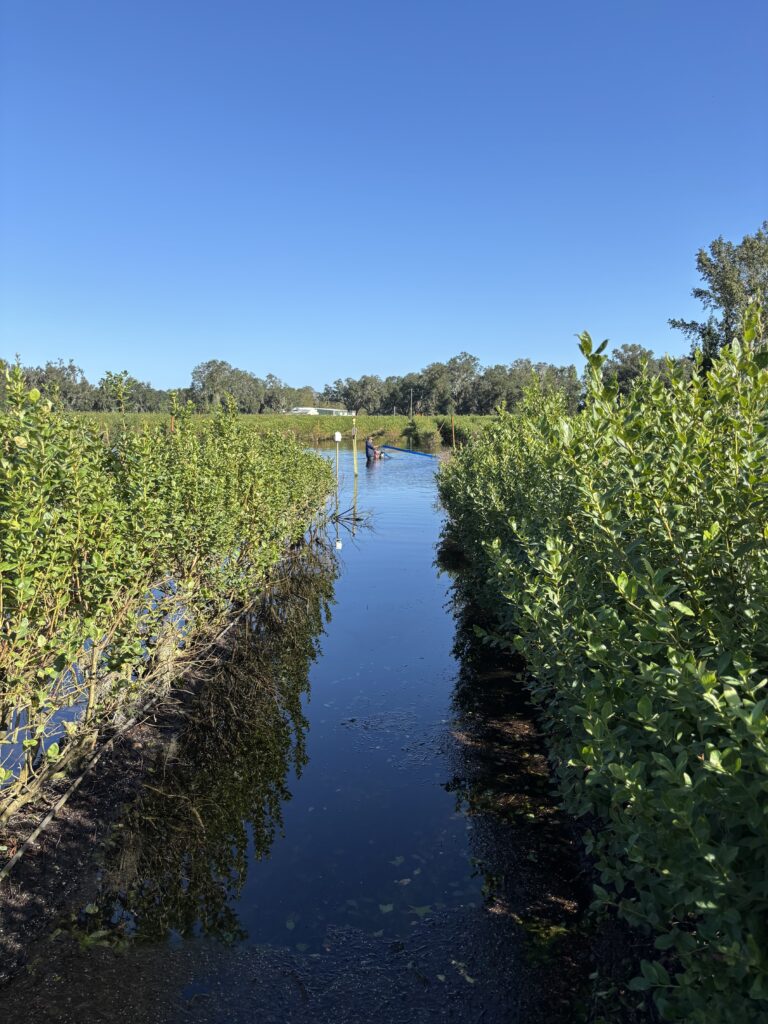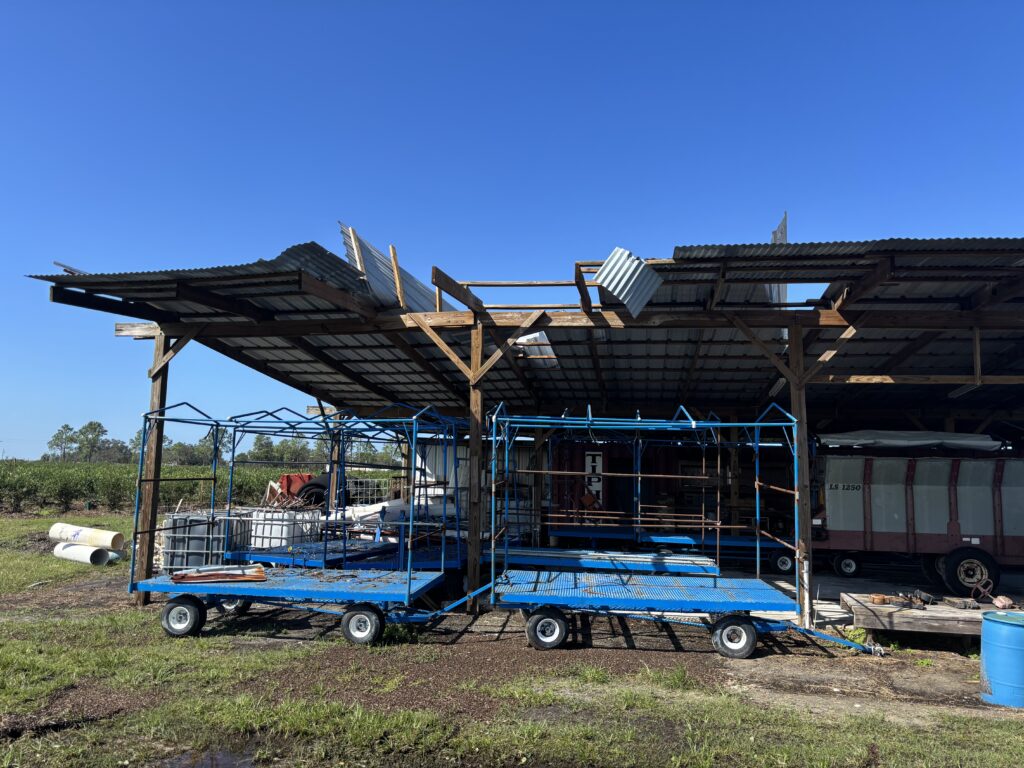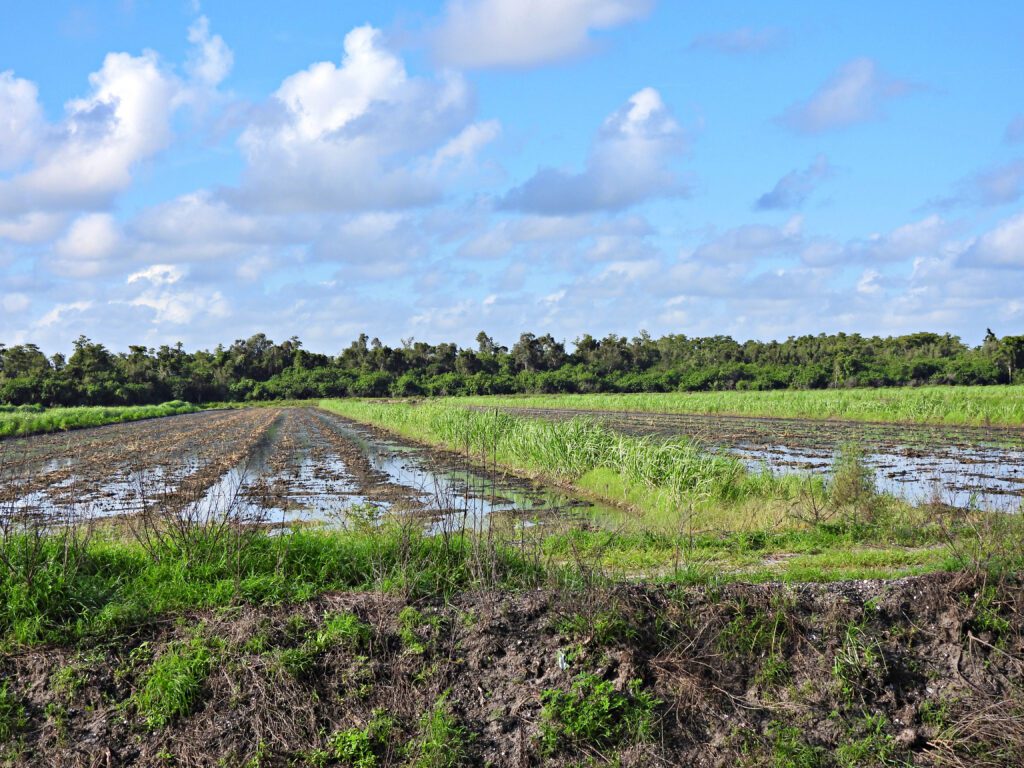Florida Growers Assess & Adjust in Wake of Hurricane Milton
by REBEKAH PIERCE
photos provided by RYAN ATWOOD
The timing of Hurricane Milton couldn’t have been much worse for Florida growers. The storm blew through the middle of the state just two weeks after Hurricane Helene devastated the west coast and Big Bend region.
As expected, the impacts of the storm extended well beyond power outages and downed trees. Central Florida farmers now face the mammoth task of moving forward after experiencing devastating losses.
According to the American Farm Bureau Federation, the counties affected by Hurricane Milton produce more than $7.4 billion in crops and livestock. The latest estimates show that approximately 99% of Florida’s strawberry acreage was in the direct path of the storm. (Florida produces the majority of the domestic winter strawberry crop.)
Ryan Atwood grows blueberries and strawberries at Atwood Family Farms in Eustis. He says of his crops, the strawberries suffered the most damage.
“The storm pulled up about 45 percent of the plastic we had already put down,” he says. “We lost some strawberry plants but were pretty fortunate. Other farmers lost more. Ours weren’t underwater for a long time, and they didn’t blow away too much.”
According to Brianne Reichenbach of the Florida Strawberry Growers Association, “Close to half of the acreage in the industry was planted when the storm came through. Immediate effects of Hurricane Milton included flooding on the northern impacted areas, damage to plastic bedding for the crop, and some infrastructure damages.”


She continues, “At this point in time, we do not know the long-term implications of the storm for the season.”
Yet Atwood is optimistic, noting that even though some of his pole barns were damaged, he’s been working hard to recover from the storm. He emphasizes the challenges of working with an outdated crop insurance program, adding, “Any time you have something like this in the farming community, it’s difficult. Margins have been tight on farming and specialty crops in Florida, in particular, over the last 10 years. You’re getting squeezed on the price every year and costs are going up with inflation, so the margins are compressed. These events just add to that negative trend.”
The damage was not exclusive to the strawberry industry.
Bill Braswell, who grows blueberries on his farm in Auburndale, says he isn’t sure what to expect moving forward. “Yields…they will be down. I have no idea how much because we are still losing leaves [on the plants] even though it’s been almost three weeks. For us, it will be wait and see.”
Like Atwood, Braswell says he feels fortunate that they had minimal flooding, thanks to the farm’s hilltop location.
“We’re not concerned about pests or diseases,” he says. “We are increasing fertilization. Normally, we cut it back this time of year, but we won’t this year. We’re trying to promote any additional growth before the cold spell.”
For farmers around the state, dealing with the impacts of Milton has been about taking proactive steps as well as reactive ones.
“I like to hedge my bets,” says Rodger Bilbrey of Bilbrey Family Farm in Auburndale.
“We had extra plants in our greenhouse, which is designed to take 125 mile-per-hour sustained winds. The greenhouse was fine, and the plants were fine. Once we got rid of the water, we now had something to replant.” After the storm, it was just a matter of, “Tear up the plastic and drip tape, disc it in, wait for it to dry, then as soon as [the soil] dried we started to replant.”
Bilbrey says the damage forced them to delay the farm’s opening by about six weeks. They’ve asked their customers — Bilbrey Farms operates on a CSA (Community Supported Agriculture) model — to be patient with them. He also emphasized the importance of clear communication throughout the process.
“We rely on the community’s understanding that we’re going to be late and to support us when we do open so we can continue to do what we do as farmers.”
Reichenbach echoes that sentiment, encouraging the community to support the strawberry industry (and others) by purchasing Florida products at the grocery store whenever possible.
It will be a long road, but Bilbrey and Atwood both agree that this is something Florida’s farmers can overcome.
“This has been a really tough year for all farms,” Bilbrey laments.
“We’re farmers; we’re eternal optimists,” he continues.
“It will always get better. You have a bad year, but you just have to bounce back and keep going.”

